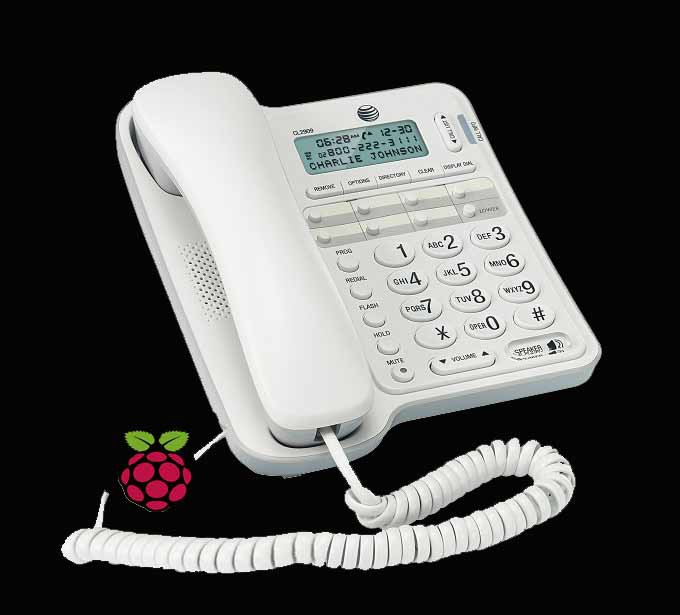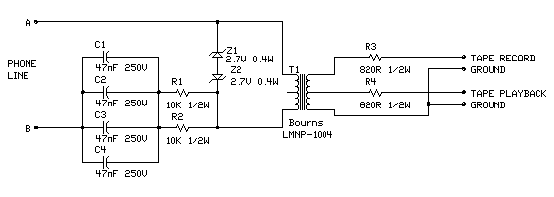At some point in this build one has to decide how to wire up the Pi to the actual phone/line before any magic happens.
In truth, there are two ways to go about this, so I will cover the 'safe', 'approved', way first, and then the (I feel) much more robust option with a word of caution.
Method 1: Place the device between the phone and the handset.

This is also the 'easiest' choice as it avoids having to play around with any of the high voltages of the incoming phone line itself, and at this intercept point, basically we are dealing with a small speaker and a mic.
Further, at least initial investigations suggest the i/o signal here in most cases should be at standard 'line level'-- meaning aside from splicing the audio signals from the PI (and more on this in another post), no other intermittent hardware is required.
One would need a pair of suitable 4P4C (RJ9) connectors like this, but otherwise here, not much else, beyond a second headset cord to bridge the connections, required.
Pros:
- Inexpensive/minimal wiring.
- Except for just a few components, a little bit of 'hacking', and a few 'off the shelf wires', no secondary external PCB required.
- No potentially 'high level' voltages involved, minimal danger to the Pi board itself, or personal risks of bad wiring pissing off the phone company.
Cons:
- While all of the above are, I feel, great pluses a big problem with the above design is that it simply 'doesn't work' if you have a cordless home phone system-- Or there is no 'headset' to plug into... So more on this, in the next section.
Method 2: Intercept the line.
Again, a disclaimer here, not because I am at all 'into them', but this is designed, fundamentally to be an assistive technologies type project, and not your 'casual hack', so I would not want to risk, playing with higher voltages, either 'troubles with the phone company', or if something isn't sourced or soldiered quite right, something burning up and starting a fire.
Let us presume none of the above, as PSTN is, today, very, very common-- But at least by way of my own searches, it seems somewhat difficult to find the exact standards for interacting with such devices, so if there are any 'tried and true' analog engineers that know my interpretations require a crucial correction, I would appreciate it.
In my own household today, I know we just have a separate device that just 'simulates' such conditions, and otherwise we're just VoIP.
With regard to resources, here is possibly one of the greatest resources on the subject I have found, basically a carefully curated archive of old 'UseNet' posts, and while I recall those days, I am not yet confident, still, in interpreting a circuit composed in ASCII.
So, 'ripe fruit' of this page (and other explorations), invokes 'two in mind' style of designs, either here:

For the needed interface circuit (though note a 'correction'-- the Bourns LMNP-004 is no longer readily available, unless being 'totally-retro' one wishes to sacrifice one's first born child for it. However, reasonably today, in either SMT or through-hole style, one can easily discover a suitable modern replacement (or for 'cliff-notes' assuming through-hole style, this should work, as a replacement, just fine.
Granted, an attentive observer would quickly realize there is no 'hook', or pick-up trigger here on this line.
I have, already, scoped out a few other potential design models (or that is to say 'circuits between jack and line'-- Many other projects are out there to gain power, an while yes, in an 'emergency' situation a good skill to know, not an 'everyday' practice I'd like to instill.
 Anthony
Anthony
Discussions
Become a Hackaday.io Member
Create an account to leave a comment. Already have an account? Log In.